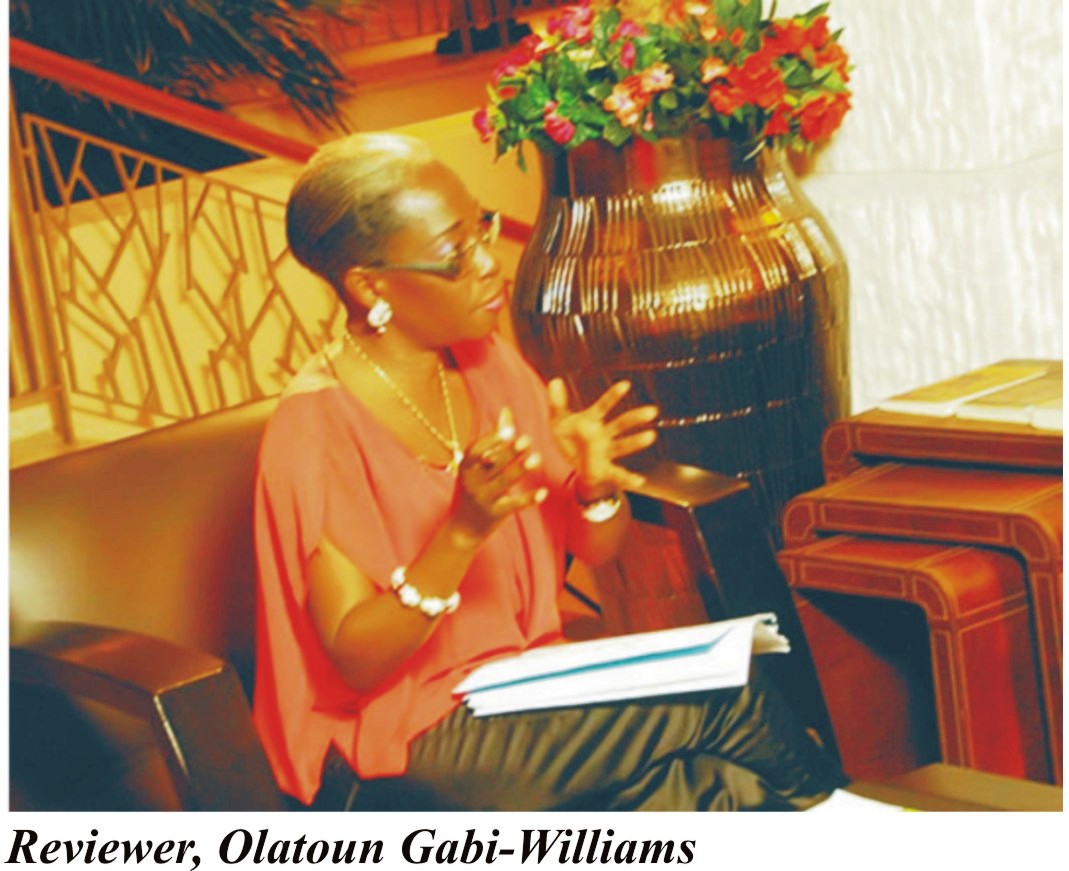
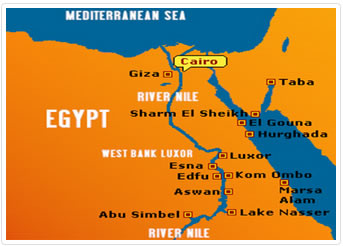 Published in 2008, ‘Cairo’s Street Stories’ by Lesley Lababidi predates 25th January 2011, the day when so-called lotus revolutionaries, mass mobilized on social media, converged on Cairo’s Tahrir Square to begin an occupation which quickly became known as the Arab Spring. Over 9 days of protest, across the airwaves, breaking news would focus the world’s attention on what was a largely peaceful revolution. It ended on 11th Feburary 2011 with the resignation of President Hosni Mubarak. It was the end of Mubarak's kow -towing to the United States of America; the end of his personal and determined appeasement of Israel and the end of the modern day pharaoh which with his dynastic ambitions, is how Hosni Mubarak was viewed.
Published in 2008, ‘Cairo’s Street Stories’ by Lesley Lababidi predates 25th January 2011, the day when so-called lotus revolutionaries, mass mobilized on social media, converged on Cairo’s Tahrir Square to begin an occupation which quickly became known as the Arab Spring. Over 9 days of protest, across the airwaves, breaking news would focus the world’s attention on what was a largely peaceful revolution. It ended on 11th Feburary 2011 with the resignation of President Hosni Mubarak. It was the end of Mubarak's kow -towing to the United States of America; the end of his personal and determined appeasement of Israel and the end of the modern day pharaoh which with his dynastic ambitions, is how Hosni Mubarak was viewed.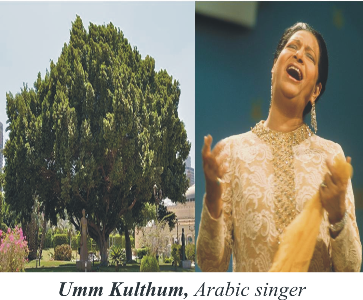 This book is an important cultural history: 141 pages of illustrated text help us to understand how the lotus revolution of 2011 advanced nationalist prophecy speaking through the lives and the politics of a pantheon of patriots of Egypt: politician Saad Zaghoul, soldier
This book is an important cultural history: 141 pages of illustrated text help us to understand how the lotus revolution of 2011 advanced nationalist prophecy speaking through the lives and the politics of a pantheon of patriots of Egypt: politician Saad Zaghoul, soldier Gamal Abd al Nasser, economist Talaat Harb, singer Umm Kulthum, and local sculptor Mahmoud Mukhtar who carved the prophecy in stone in the form of a woman he named: ‘Egypt’s Awakening’. Cairo's Street Stories' sheds a brilliant light on Egypt's ongoing quest, alongside her embattled road to democracy, to unearth an indigenous identity, buried beneath a breathtaking vista - 2300 years of occupied desert history. We walk about the City of a Thousand Stories, ‘listening’ to Lababidi ‘speak’ with refreshing clarity on a wide range of topics spanning that history.What I have learned from her is fascinating about the evolution of women’s rights and the liberation of women embodied in the full figure of singer - el Sitt - Umm Kulthum. Kulthum, -the Lady - whose pride in her heritage and pan-Arabic vision was celebrated throughout the Arab world. I was intrigued by the origin and layout of the Islamic garden - the bustan - and by the way time is passed by elderly and middle-aged men in traditional coffee houses, the ahwas. But the most compelling feature of this book dedicated to ‘Cairo’s traffic police and taxi drivers’ must be the stories of Egypt’s conquest and foreign occupation from 332 BC when Alexander the Great conquered the land until 1953 when the modern Republic was founded .
Gamal Abd al Nasser, economist Talaat Harb, singer Umm Kulthum, and local sculptor Mahmoud Mukhtar who carved the prophecy in stone in the form of a woman he named: ‘Egypt’s Awakening’. Cairo's Street Stories' sheds a brilliant light on Egypt's ongoing quest, alongside her embattled road to democracy, to unearth an indigenous identity, buried beneath a breathtaking vista - 2300 years of occupied desert history. We walk about the City of a Thousand Stories, ‘listening’ to Lababidi ‘speak’ with refreshing clarity on a wide range of topics spanning that history.What I have learned from her is fascinating about the evolution of women’s rights and the liberation of women embodied in the full figure of singer - el Sitt - Umm Kulthum. Kulthum, -the Lady - whose pride in her heritage and pan-Arabic vision was celebrated throughout the Arab world. I was intrigued by the origin and layout of the Islamic garden - the bustan - and by the way time is passed by elderly and middle-aged men in traditional coffee houses, the ahwas. But the most compelling feature of this book dedicated to ‘Cairo’s traffic police and taxi drivers’ must be the stories of Egypt’s conquest and foreign occupation from 332 BC when Alexander the Great conquered the land until 1953 when the modern Republic was founded .
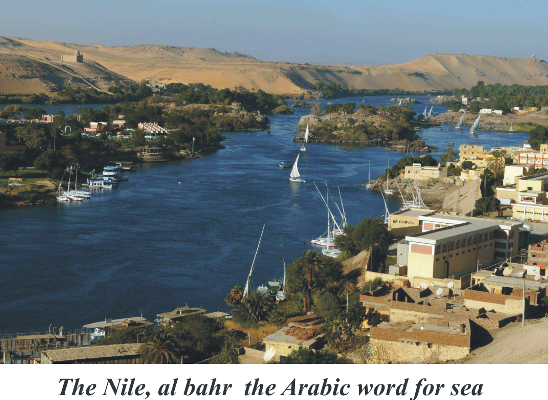 Though Lesley Lababidi does not take us on a linear journey, the tour is well-planned. She does not make it difficult to take in the plethora of evidence of foreign occupation manifested not only politically, but in art, language, education, urban planning and in the fact and manner of economic exploitation. Looking at the timeline of foreign invasions through her eyes, it is easy to see why Egypt’s raging identity crises are as inevitable as the annual flooding of the Nile.
Though Lesley Lababidi does not take us on a linear journey, the tour is well-planned. She does not make it difficult to take in the plethora of evidence of foreign occupation manifested not only politically, but in art, language, education, urban planning and in the fact and manner of economic exploitation. Looking at the timeline of foreign invasions through her eyes, it is easy to see why Egypt’s raging identity crises are as inevitable as the annual flooding of the Nile.
Lababidi has so ignited my fascination with the identity of the ‘City of a Thousand Minarets’, that I have begun my own exploration and what, or rather whom, I’ve discovered standing on the shoulders of Ahmad Shawki, official poet to the khedival court and Hafez Ibrahim, ‘Poet of the Nile’, is a 21st century Egyptian poet based in Seattle, United States of America. Maged Zaher’s aphoristic poems, composed shortly after the Arab Spring of January 2011, reflect the reality of Egypt however many revolutions her cities experience today, yesterday and tomorrow. Of his native Cairo, he writes:
In a city under heavy rebranding There are bearded men And lovers Walking to McDonald’s (The one next to the armored vehicle) (‘The Revolution Happened and You Didn’t Call Me’. Maged Zaher. Tin Fish Press. 2012).
What Zaher is saying in his poem is what Lababidi is telling us through her stories of Cairo streets. I see three things: that struggle for liberation is perennial here, embedded in the fabric of Cairene/Egyptian life; that the East/West cultural confluence is as impossible to prise apart as the colours of the tannura spinning skirt displayed on her book’s back cover. And Lababidi steers us around historical landmarks so expertly that we see the third thing with startling clarity: Cairo/Egypt has been globalizing forever; globalising as she sat shackled under the rule of ancient civilizations: Persia, Greece, Rome, Byzantium, Arabia ; globalising in the 19th and 20th centuries as she bowed the knee to France and Britian to which powers, Cairo, more than any other Egyptian city, owes her very western look.
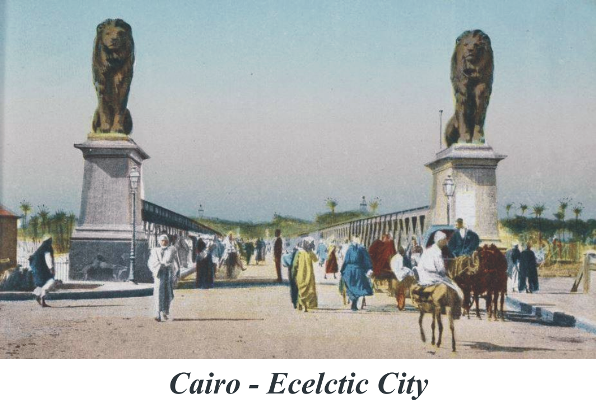
But not by imposition. It was fascinating to learn that the modernisation of Egypt was instigated in 1805 by Ottoman Muhammad Ali - governor –general at the time. And to learn that his grandson, Ismail Pasha - to whom the westernizing mantle fell in the late 19th century - was as committed as his grandfather to ‘(the) quest for cultural diversification (and) the latest in industry and technology’ from Europe. It was Khedive Ismail who would charge Frenchman Henri Alfred Jacquemart with the task of embellishing and shaping the topography of the city, instructing Jacquemart to reproduce in Cairo the kind of heroic statuary found throughout Paris, a city thousands of miles away from al- Qahira, the city he ruled; al-Qahira, gift of the Nile, carved out of the desert of Arabia. Under the France trained Khedive, this oriental city would be transformed into the 'Paris of the East': its urban planning commissioned to mirror if not the fascist spirit of Haussmann’s City of Light, its appearance: its symmetrical quarters and splendid avenues.
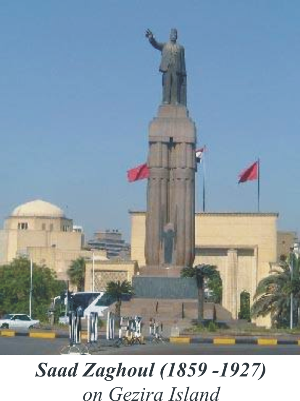 Warring against the Eurocentric vision was the counter-culture of nationalism which evolved in the early 20th century under the auspices of icon of nationalism Saad Zaghoul and local artist, Mahmoud Mukthar, responsible for the magnificent sculpture of Zaghoul located today on Gezira Island. Inspired by Zaghoul’s patriotic beliefs, Mukhtar’s life’s mission would be to produce political art in a campaign to free his country from foreign occupation and domination by the scions of Muhammad Ali, perceived as foils for Napoleonic France and Imperial Britain.
Warring against the Eurocentric vision was the counter-culture of nationalism which evolved in the early 20th century under the auspices of icon of nationalism Saad Zaghoul and local artist, Mahmoud Mukthar, responsible for the magnificent sculpture of Zaghoul located today on Gezira Island. Inspired by Zaghoul’s patriotic beliefs, Mukhtar’s life’s mission would be to produce political art in a campaign to free his country from foreign occupation and domination by the scions of Muhammad Ali, perceived as foils for Napoleonic France and Imperial Britain.
Under President Gamal al Nasser, hero of the 1952 revolution, this counter-culture would experience exponential growth. While consecrating his life to the implementation of socialist principles which would empower the masses, it would fall to Nasser to Egyptianize his people’s view of the world, beginning his crusade on Egypt’s city streets and squares where the visual impact of the Ottoman dynasty was loudest. With grim determination, he began the replacement of Ottoman memory and ideology with revolutionary doctrine. Ismail Garden would become, under his leadership, Hurriya (Freedom) Garden; Midan al-Ismailiya, Midan al-Tahrir (Liberation Square). Midan Soliman Pasha (named after Joseph Sève, naturalized Frenchman), Nasser changed to Midan Talaat Harb, in honour of the Egyptian economist and founder of Banque Misr.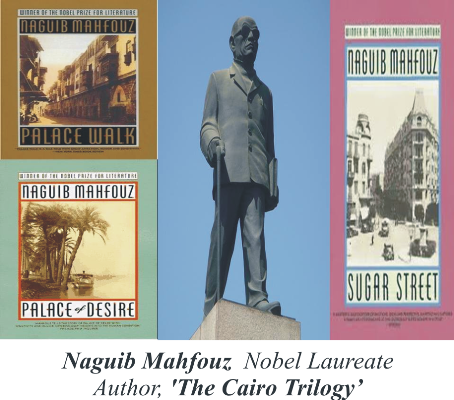
And so, with our study of the evolution of Cairo/Egypt, what looks like the hypocrisy of novelist Naguib Mahfouz’s fictional patriarch, Ahmad Abd al-Jawad with his strict Islamic behavior at home and his wining and womanising outside, begins to look less like duplicity and far more like the outworking of a mixed up cultural legacy – painful and confusing for all. Mantric questions reverberate: Are we East/ Orient? Are we Western/ Occident? Which should we be when our loins are on fire, our minds pulled this way and that and our hearts hungry and inflamed? Can Sharia legislate that?
Picture the pyramids of Giza. The Ottoman palaces. Picture Qasr el-Nil where Frenchman Jaquemart’s lions stand guard around nationalist Saad Zaghoul whose life was consecrated to driving the French out. It is one of the juxtapositions, one of the ironies, which so colourfully characterize the landscape of the city of Cairo. Picture the city's coffee houses, her ahwas and her bridges – the kubris- straddling the Nile. Picture the gardens of the Opera House where a majestic Umm Kulthum stands and finally, picture Giza's Midan Sphinx where we stop to admire the imposing statue of the great Egyptian man of letters, Naguib Mahfouz.
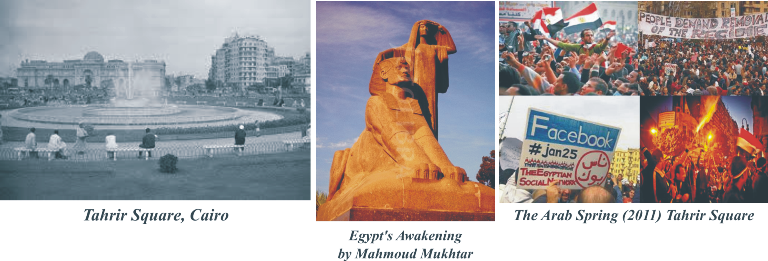
What I propose is that the dazzling vistas presented by Lesley Lababidi in ‘Cairo’s Street Stories’ be read as the factual counterpart to ‘The Cairo Trilogy’, by the Nobel Laureate. If for decades now, people worldwide have enjoyed this engrossing family saga, it is also true that reviewers worldwide continue to regret the lack of annotation regarding political events reflected in it. Neither ‘Palace Walk’, nor ‘Palace of Desire’, nor ‘Sugar Street’, contain footnotes to demystify the political debates recorded in the novels for readers unfamiliar with Arab world history. By ‘piecing together the jigsaw of Egypt’s history’ through a study of heroic statuary adorning the ‘midans’, the streets and the gardens of present day Cairo, Lababidi, with her unveiling of Egypt's glory, has masterfully answered the call. Click Here to get a copy
